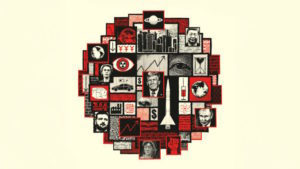The Economist’s 2025 Cover Decoded: Globalist Control, 15-Minute Cities, and Saturn Symbolism Revealed
The new cover of The Economist always sparks significant intrigue and speculation, particularly among those who understand the publication’s annual cover is a form of predictive programming or coded messaging about the year ahead.

The 2025 cover, featuring a minimalist, highly symbolic design, includes several elements that observers have linked to themes of globalist control, technocracy, and societal transformation.
Prominent symbols highlighted by critics include:
- Black-and-Red Color Scheme: Traditionally associated with power, control, and occult themes, the stark contrast of these colors has been interpreted as a deliberate choice to signal upheaval or authoritarian dominance.
- Saturn Symbolism: Saturn has long been a key motif in occult and esoteric traditions, often representing tenacity, discipline, and karma.
- One-Eye Imagery: Frequently tied to secret societies and surveillance states, the one-eye symbol is a recurring motif that many associate with globalist agendas.
- Hourglass: Seen as a reference to the passage of time, some interpret it as alluding to imminent societal shifts or events linked to a “countdown.”
- Technocratic Elements: Representations of technology, including grids or digital motifs, point to a future increasingly dominated by AI and centralized control mechanisms.
- Brick Wall and Fences: Possibly symbolizing division, barriers, 15 minute cities or the construction of new ideological or physical frameworks.
The Economist has longstanding ties to the Rothschild family, with members historically maintaining ownership stakes in the publication through private investment vehicles. This connection, combined with its reputation as a globalist publication, has fueled speculation about its editorial perspective and potential influence on its reporting.
Renowned for its eerily provocative covers, The Economist frequently incorporates symbolic imagery that observers interpret as subtle predictions or commentary on global economic, political, and societal trends.
These covers have become a focal point for debate, with some viewing them as coded messaging about the agendas of powerful elite groups, while others see them as thought-provoking artistic representations of pressing global issues.

Previous covers have been scrutinized for their predictive programming of major global events like the 9/11 attacks in 2001, the global financial crisis in 2008, and geopolitical shifts including the Russia-Ukraine war.
While critics argue these covers hint at coordinated agendas, others suggest they merely offer a provocative take on current and future trends in politics, technology, and society.
The 2025 cover continues this tradition of evoking speculation, offering a canvas that invites multiple interpretations.
yogaesoteric
November 25, 2024
